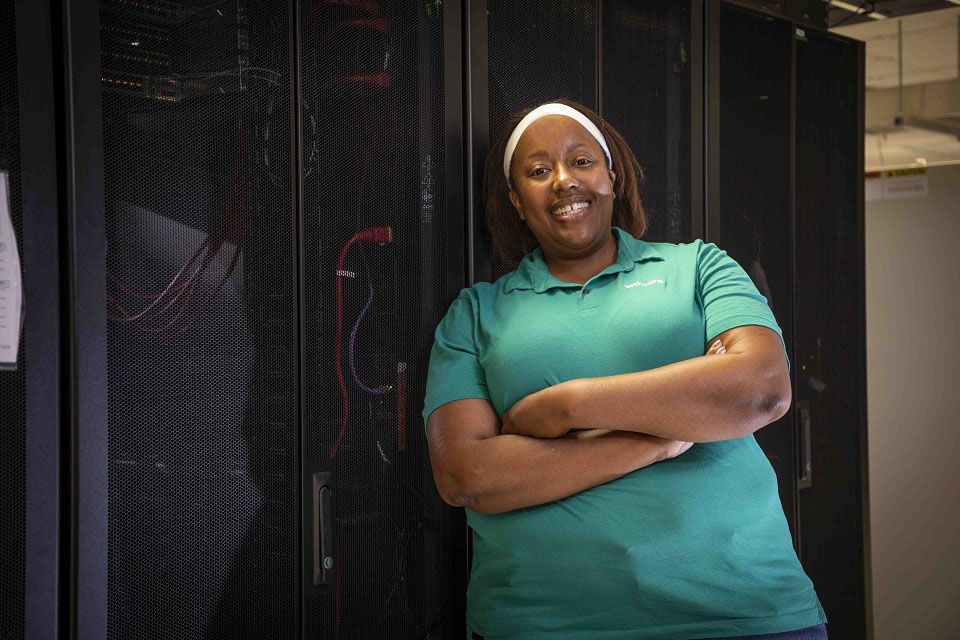Recognizing our IT systems administrators

Kami Bush, who supports CNS’s VMware virtual infrastructure, stands in front of a Y‑12 server rack in Building 9117.
Think about your daily routine for work. Often, technology plays a role that is front and center. As a collection of hardware, software, applications, and networks, it has undoubtedly grown to serve as a gateway to how we connect with others, find information, track data, or essentially solve problems.
As end users, we infrequently question how or why technology works; it only matters that it does. Yet, behind the secured doors of an internal server room or the screen of a computer supervising our CNS network is an IT systems administrator ensuring that we’re operational and online.
“Our team of administrators are critical to how we connect and perform as an enterprise,” said Brad Burdett, director of IT Operations, who leads a team of more than 50 systems administrators.
From monitoring computer servers and data storage, maintaining virtualization and VPN capabilities, deploying new applications, to solving unplanned system outages, Information Solutions and Services’ systems administrators touch every point of technology at Pantex and Y‑12.
“The most essential skill an IT systems administrator can have is critical thinking,” said IT systems administrator, Kami Bush, who specializes in hardware, storage, and virtualization at Y‑12. “Planning a deployment, creating architecture, or troubleshooting a problem all require critical thinking skills. It’s important that we’re able to see not only the ‘forest,’ but also the ‘trees’ within.”
Keeping attention to detail, the scope of IT systems administrators requires that they look beyond the big picture and into to the ”trees” to monitor operational risks to existing and newly procured hardware, software, or applications connected to our internal network. With more than 2,000 servers and 2,4000 applications connected to the network, it is no easy task.
“The most challenging part of my career is keeping up with the technology. As soon as you get well‑versed in a version or architecture, a new one that is more efficient or powerful replaces it,” Bush said. “That constant advancement means you never get bored, but you also are always challenged to read up on the cutting edge as it will eventually be the new normal.”
Ask any systems administrator and most will agree that change is inevitable in technology. After 15 years at Pantex, IT systems administrator Edmond Keller has served witness and contributor to its growth at the site.
“I have been in the technology industry since 1985. While that does not quite qualify me as ancient in the industry, I am a bit of a dinosaur,” Keller said.
For point of reference, 1985 was also the year the .com domain was born.
“The technology industry consistently reinforces that when you think you have something figured out, there will be an event or situation which proves you really don’t know what you think you know. It is guaranteed humility training,” he said.
Entering the era of digital transformation across our nation and our sites, technology will continue to evolve to better serve the lives and work of our people. As we move from wired to wireless or cords to clouds, you can guarantee that an IT systems administrator will be behind it. In recognition of the 22nd annual IT Systems Administrator Appreciation Day this year, we thank all of you for your work and dedication at Pantex and Y‑12.
